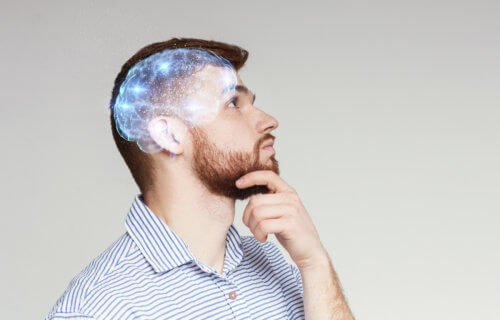BALTIMORE — For those that compare the human brain to a computer, a new study is helping you prove your case even further. Researchers from the University of Maryland School of Medicine say that a mysterious brain area known as the claustrum acts a lot like an internet router. Until now, researchers had thought the claustrum was the center of human consciousness — but the new findings appear to disprove that.
The claustrum sits under the brain’s outer, wrinkly cortex. It exchanges signals with the cerebral cortex, which handles higher reasoning and complex thought. Since the claustrum has this extensive connection to the brain’s cortex, scientist Francis Crick theorized in 2005 that this brain region is the seat of human self-awareness.
However, the new study suggests that the claustrum takes executive commands from “boss” areas of the brain’s cortex which form complex thoughts to create “networks” in the cortex — just like a high-speed router. The claustrum also coordinates these networks, so they work together to accomplish highly complex or mentally demanding tasks.
The team adds that gaining a complete understanding of the brain will help scientists learn more about disorders which involve disorganized networks in the mind. These include substance addiction, Alzheimer’s, and schizophrenia.
“The brain is the most complex system in the known universe. It is these data-driven theoretical advances that propel our knowledge forward toward harnessing that complexity for improving human life,” says Dr. Brian Mathur, Associate Professor of Pharmacology at UMSOM, in a university release. “As the most highly connected structure in the brain, the claustrum is a window into the enigma of the brain, the mind.”
How did the team disprove this theory of consciousness?
Dr. Mathur and his team conducted a series of experiments with both humans and animals to determine the precise role of the claustrum. In the first experiment, they turned off the claustrum in conscious mice using modern neuroscience techniques. The mice did not lose consciousness and actually continued to run around as they normally would. That was the first strike against Crick’s theory.
The team then gave the mice one cognitively simple task to perform and one that was more difficult. Normally, a mouse would be able to perform both tasks. However, turning off the claustrum made it impossible for the mice to perform the more difficult task.
To see if this would happen in humans, Dr. Mathur teamed up with Dr. David Seminowicz from the UM School of Dentistry and Dr. Fred Barrett from Johns Hopkins University School of Medicine to examine people engaging in simple and complicated mental tasks. Each of the participants underwent functional MRI brain scans during these tasks. Results show that the claustrum only “lit up” when the participants performed the more difficult task.
Moreover, this coincided with the activation of a network in the brain’s cortex connected to peak cognitive performance. According to the researchers, that’s the second strike against Crick’s theory of consciousness.
“Understanding how the brain flexibly forms and coordinates these networks — through the claustrum — is essential to treat cognitive decline, which happens in addiction, Alzheimer’s disease, and schizophrenia,” says UMSOM Dean Mark Gladwin, who is also Vice President for Medical Affairs at the University of Maryland.
“Our hypothesis provides us with a much-needed conceptual framework to devise new therapeutic strategies,” Dr. Mathur concludes.
The study is published in the journal Trends in Cognitive Sciences.

